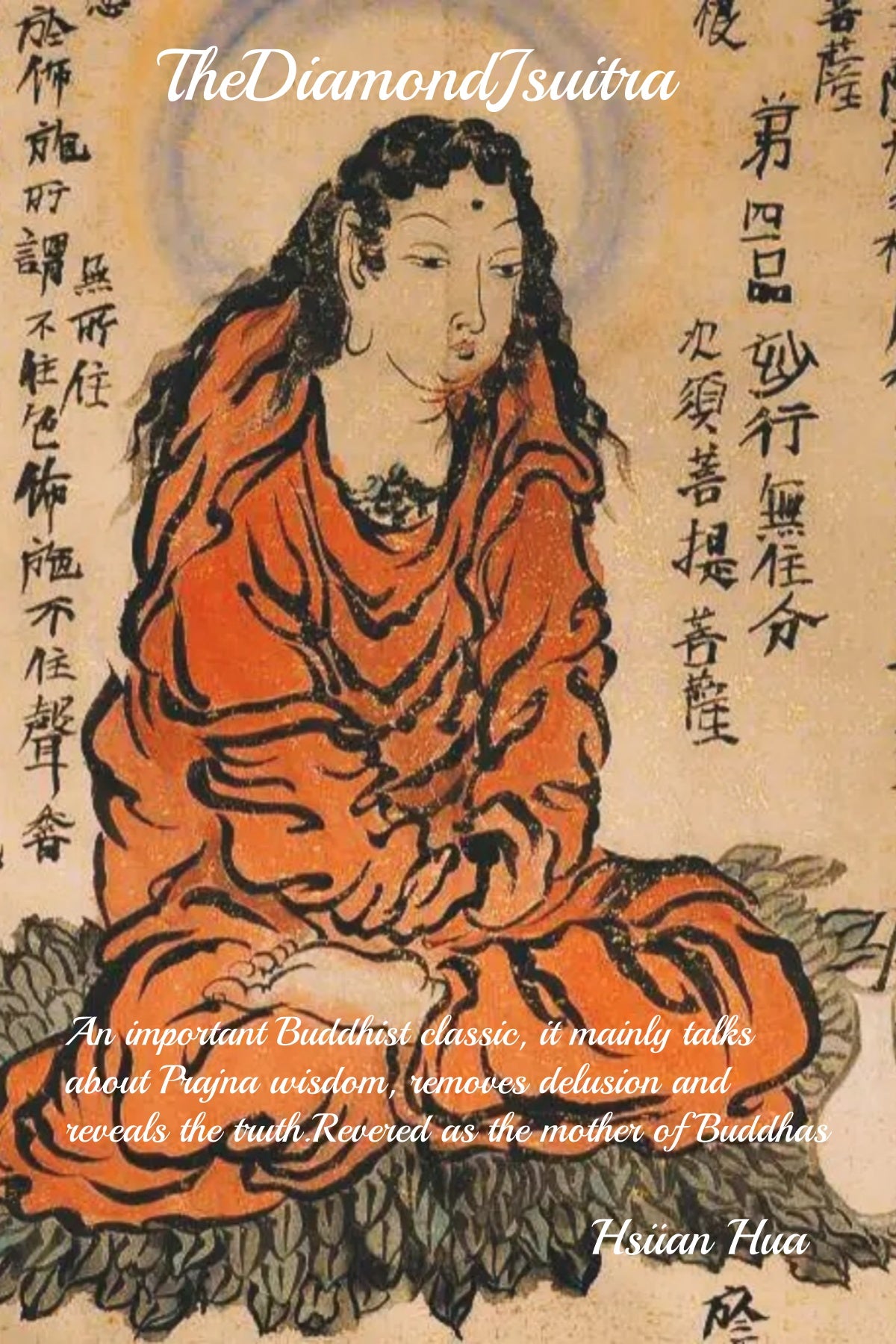The Diamond Sutra
The Diamond Sutra
Couldn't load pickup availability
Book Summary
The Diamond Sutra is one of the most important texts in the Prajñā (wisdom) category of Mahayana Buddhism. Its central teaching is about the realization of emptiness (śūnyatā) and the non-attachment to forms and concepts, guiding practitioners to transcend ego, duality, and all forms of clinging in order to attain enlightenment.
1. "All appearances are illusory; seeing that all appearances are non-appearances, one sees the Tathāgata."
This is one of the most famous lines in the sutra. It means that what appears to exist is ultimately impermanent and without inherent nature. True wisdom sees through appearances and understands their emptiness.
“All conditioned phenomena are like a dream, an illusion, a bubble, a shadow...”
— Diamond Sutra
2. "One should develop a mind that does not abide anywhere."
The sutra teaches that in the practice of generosity, meditation, or any virtuous action, one should not be attached to outcomes or forms. True compassion and wisdom arise from a mind that is free from fixation.
“Develop a mind which does not abide in anything.”
3. Letting go of both self-identity and conceptual dharma
The sutra emphasizes breaking free not only from attachment to the self (ego) but also from attachment to the teachings and methods themselves. Even the teachings are ultimately skillful means.
4. "A bodhisattva should practice generosity without attachment."
A true bodhisattva gives without expecting reward or clinging to merit. This reflects the deep practice of emptiness — doing good without seeking recognition.
“A bodhisattva gives without attachment to form.”
5. True merit is beyond measurement or attachment
The sutra warns against attaching to ideas of merit or measuring virtue. The greatest merit comes from wisdom that transcends dualistic thinking.
“If a bodhisattva clings to the notions of self, person, being, or life span, he is not a true bodhisattva.”
Summary
In essence, the Diamond Sutra teaches us to let go of all attachments — to self, to others, to concepts, even to spiritual progress. It guides us to cultivate prajñā (wisdom) through seeing the emptiness of all phenomena, so that we may act with compassion and freedom, without being bound by ego or form.
Excerpt from the original text
The marks of dharmas are spoken of by the Tathàgata as no marks of dharmas; therefore they are called the marks of dharmas. They are merely given a false name.
The Vajra Såtra expresses praj¤à, the wonderful prin- ciple of true emptiness, and also expresses the dharma door of equality found within the wonderful principle of praj¤à. In general there are Five Aspects of Equality evident in the Såtra.
1) the equality of living beings and Buddhas; 2) the equality of emptiness and existence; 3) the equality of all dharmas;
4) the equality of one and many; and 5) the equality of all views. Most people do not understand equality Dharma doors, so they put a head on top of a head, add marks to marks, and change what is basically equal to what is, unequal.
Author's introduction
Master Hsuan Hua's Core Views on Buddhist Practice
Master Hsuan Hua was a renowned 20th-century Mahayana monk who played a pivotal role in introducing and establishing Chinese Buddhism in the West, particularly in the United States. He emphasized a sincere, disciplined, and grounded approach to Dharma practice. The following summarizes his key insights on cultivation:
1. Emphasis on the Three Non-Outflow Studies: Precepts, Samadhi, and Wisdom
Master Hsuan Hua strongly upheld the Vinaya (precepts) and often stated:
“Precepts are like the earth; all wholesome Dharma arises from them.”
He believed that precepts are the foundation — with precepts comes samadhi (meditative concentration), and with samadhi arises wisdom. Many modern practitioners fail, he noted, because they rush toward higher stages without establishing this foundation.
2. "True Practice Over Empty Talk"
He advocated for real cultivation, not just theoretical knowledge or spiritual talk:
“The Dharma is about practice, not about eloquent speech.”
Real practice involves enduring hardship, letting go of ego, and transforming conduct. He encouraged practitioners to turn inward and remain humble and grounded.
3. Upholding Right Faith and Right Practice
Master Hsuan Hua warned against chasing after spiritual powers or following deviant teachings. He stressed the importance of orthodox Dharma and correct intention:
“Better to not become a Buddha for a thousand years, than to take one step on the wrong path.”
4. Advocating the Study of Key Mahayana Sutras
He deeply revered texts like the Avatamsaka Sutra, Lotus Sutra, and especially the Shurangama Sutra. He said:
“If the Shurangama Sutra perishes, the Proper Dharma will perish.”
In his view, studying the sutras is essential to establish right view and prevent blind cultivation.
5. Compassion Rooted in Filial Piety and Great Vows
Master Hsuan Hua placed great emphasis on filial piety and considered it the root of entering Buddhism:
“Without a heart of filial respect, one cannot even step into the Buddha's door.”
He also taught that true cultivation involves compassion for all beings, taking their suffering as one's own and vowing to help them.
6. The Middle Way: Avoiding Extremes
He taught the importance of balance in practice — neither falling into nihilism nor clinging to form. He said:
“The greatest danger in cultivation is improper motivation, not hardship.”
Right intention is the compass for the path.
7. The Six Great Principles
Master Hsuan Hua gave his disciples six guiding principles to live and practice by:
No fighting
No greed
No seeking
No selfishness
No self-benefit
No lying
These were designed to address the most common pitfalls in both monastic and lay practice.
Summary
Master Hsuan Hua’s approach to cultivation can be summarized as:
“Uphold precepts, practice sincerely, rely on right view, combine wisdom and compassion, honor filial piety, and vow deeply.”
He lived what he taught — establishing monasteries, translating sutras, training Sangha, and guiding countless people. His teachings are deeply practical, compassionate, and essential for sincere seekers in both East and West.
Share


